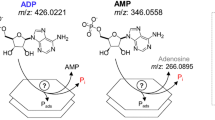Abstract
The behavior of selenium at the Earth’s surface and nearby at low temperatures and pressures is controlled by variations of the redox potential and the acidity of solutions. These parameters determine the migration of selenium and its precipitation as various solid phases. Understanding the mechanism of selenium’s behavior under surface conditions, which is important for solving environmental problems, is an urgent task of contemporary mineralogy and geochemistry. The activities of components in natural waters beyond the zones of natural (oxidation zones) and man-made contamination with selenium (a ΣSe = 10−9, a ΣFe = 10−5, a ΣCu = 10−7, a ΣZn = 5 × 10−7, a ΣCo = 10−8, a ΣNi = 6 × 10−8, a ΣPb = 10−8) and in waters formed in the oxidation zone (a ΣSe = 10−5–10−4, a ΣFe = 10−2, a ΣCu = 10−2, a ΣZn = 5 × 10−2, a ΣCo = 10−3, a ΣNi = 10−2, a ΣPb = 10−4) have been estimated. Eh-pH diagrams were calculated and plotted using the Geochemist’s Workbench (GMB 7.0) software package. The database comprises the thermodynamic parameters of 46 elements, 47 main particles, 48 redox pairs, 551 particles in solution, 624 solid phases, and 10 gases. The Eh-pH diagrams of the Me-Se-H2O systems (Me = Co, Ni, Fe, Cu, Zn, Pb) were plotted for the average contents of these elements in underground water and for their contents in oxidation zones of sulfide deposits. The formation of Co, Ni, Fe, Cu, Zn, and Pb selenites and selenates at the surface is discussed.
Similar content being viewed by others
References
Arislarain, L.F. and Hurlbut, C.S., Ahfeldite from Pacajake Bolivia: Restudy, Am. Mineral., 1969, vol. 54, pp. 448–456.
Bertrand, E., Sur la molybdomenite (sélénite de plomb), la cobaltomenite (sélénite de cobalt) et l’acide sélénieux de Bur’yanova, E.Z., Thermodynamic Aspect of the Formation Conditions of Fe, Pb, Zn, and Cd Selenides and Native Selenium in Sedimentary Rocks, Geokhimiya, 1969, vol. 7, no. 12, pp. 1451–1464.
Charykova, M.V., Krivovichev, V.G., and Depmeier, W., Selenites and Sulfates: the System Ni2+, Co2+//Se O 2−3 , SeO 2−4 , H2O—Thermodynamic Analysis and Geological Applications, Zap. Ross. Mineral. O-va, 2007, vol. 136, no. 7, pp. 246–266.
Charykova, M.V., Krivovichev, V.G., and Depmeier, W., Thermodynamics of Arsenates, Selenites, and Sulfates in the Oxidation Zone of Sulfide Ores. I. Thermodynamic Constants at Ambient Conditions, Zap. Ross. Mineral. O-va, 2009, no. 6, pp. 105–117. [Geol. Ore Dep. (Engl. Transl.), 2010, vol. 52, spec. issue 8 (Zapiski Russian Mineral. Soc.), pp. 689–700].
Charykova, M.V., Krivovichev, V.G., Yakovenko, O.S., and Depmeier, W., Thermodynamics of Arsenates, Selenites, and Sulfates in the Oxidation Zone of Sulfide Ores. III. Eh-pH Diagrams for the Me-As-H2O Systems (Me = Co, Ni, Fe, Cu, Zn, Pb) at 25°C, Zap. Ross. Mineral. O-va, 2010, vol. 139, no. 3, pp. 1–14 [Geol. Ore Dep. (Engl. Transl.), 2011, vol. 53, spec. issue 7 (Zapiski Russian Mineral. Soc.), pp.].
Des Cloizeaux, A.L. and Damour, M.A. Note sur la chalcomenite, nouvelle espèce minérale (sélénite de cuivre), Bull. Soc. Geol. France, 1881, vol. 4, pp. 51–55.
Dunn, P.J., Peacor, D.R., and Sturman, B.D., Mandarinoite, a New Ferric-Iron Selenite from Bolivia, Can. Mineral., 1978, vol. 16, pp. 605–609.
Garrels, R. and Christ, Ch., Solutions, Minerals, and Equilibria, New York: Harper and Row, 1965.
Herzenberg, R. and Ahlfeld, F., Blockit, ein Neues Selenerz aus Bolivien, Zentralbl. Miner. Geol. Palaent. Abt. A, 1935, pp. 277–279.
Howard, J.H.., Geochemistry of Selenium: Formation of Ferroselite and Selenium Behavior in the Vicinity of Oxidizing Sulfide and Uranium Deposits, Geochim. Cosmochim. Acta, 1977, vol. 41, pp. 1665–1678.
Krainov, S.R., Ryzhenko, B.N., and Shvets, V.M., Geokhimiya podzemnykh vod. Teoreticheskie, prikladnye i ekologicheskie aspekty (Geochemistry of Subsurface Water: Theoretical, Applied, and Environmental Aspects), Moscow: Nauka, 2004.
Krivovichev, V.G. and Depmeier, V., Selenites and Selenates: Se-S-H2O, Pb-Se-S-H2O, and U-Se-I-H2O Systems-Thermodynamic Analysis and Geological Applications, Zap. Ross. Mineral. O-va, 2005, vol. 134, no. 4, pp. 1–14.
Mandarino, J.A., Natural and Synthetic Selenites and Selenates and Their Gladstone-Dale Compatibility, Eur. J. Mineral., 1994, vol. 6, pp. 337–349.
Naumov, G.B., Ryzhenko, B.N., and Khodakovsky, I.L., Spravochnik termodinamicheskikh velichin (Thermodynamic Data Handbook), Moscow: Atomizdat, 1971.
Olin, A., Nolang, B., Osadchii, E.G., Ohman, L.-O., and Rosen, E., Chemical Thermodynamics of Selenium, Amsterdam: Elsevier, 2005.
Seby, F., Potin-Gautier, M., Giffaut, E., et al., A Critical Review of Thermodynamic Data for Selenium Species at 25°C, Chem. Geol., 2001, vol. 171 P, pp. 173–194.
Shvartsev, S.L., Gidrogeokhimiya zony gipergeneza. (Hydrogeochemistry of Supergene Zone), Moscow: Nedra. 1998.
Simon, G. and Essene, E.J., Phase Relations among Selenides, Sulfides, Tellurides and Oxides. I. Thermodynamic Properties and Calculated Equilibria, Econ. Geol., 1996, vol. 91, pp. 1183–1208.
Simon, G., Kesler, S.E., and Essene, E.J., Phase Relations Among Selenides, Sulfides, Tellurides and Oxides. II. Applications to Selenide-Bearing Ore Deposits, Econ. Geol., 1997, vol. 92, pp. 468–484.
Tischendorf, G. and Ungethum, H., Über die Bildungsbedingungen von Clausthalit-Galenit und Bemerkungen zur Selenverteilung in Galenit in Abhangigkeit von Redoxpotential und von pH-Wert, Chem. Erde, 1964, vol. 23, no. 4, pp. 279–311.
Treatise on Geochemistry, Vol. 9: Environmental Geochemistry, Lonar, B.S., Ed., Amsterdam: Elsevier Pergamon, 2004.
Wagman, D.D., Evans, W.H., Parker, V.B., Schumm, R.H., Halow, I., Bailey, S.M., Churney, K.L., and Nuttal, R.L., The NBS Tables of Chemical Thermodynamic Properties: Selected Values for Inorganic and C1 and C2 Organic Substances in SI Units, J. Phys. Chem. Ref. Data, 1982, vol. 11,Suppl. 2, pp. 1–390.
Author information
Authors and Affiliations
Corresponding author
Additional information
Original Russian Text © V.G. Krivovichev, M.V. Charykova, O.S. Yakovenko, W. Depmeier, 2010, published in Zapiski RMO (Proceedings of the Russian Mineralogical Society), 2010, No. 4, pp. 1–15.
Rights and permissions
About this article
Cite this article
Krivovichev, V.G., Charykova, M.V., Yakovenko, O.S. et al. Thermodynamics of arsenates, selenites, and sulfates in the oxidation zone of sulfide ores: IV. Eh-pH diagrams of the Me-Se-H2O systems (Me = Co, Ni, Fe, Cu, Zn, Pb) at 25°C. Geol. Ore Deposits 53, 514–527 (2011). https://doi.org/10.1134/S1075701511070117
Received:
Published:
Issue Date:
DOI: https://doi.org/10.1134/S1075701511070117




